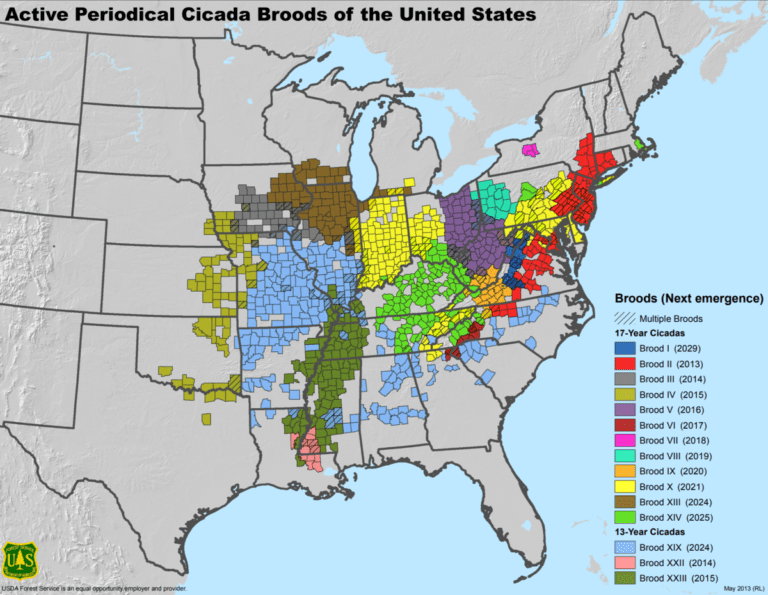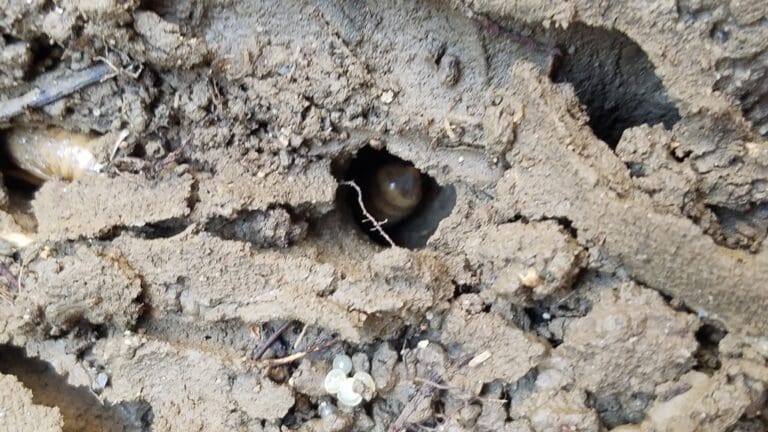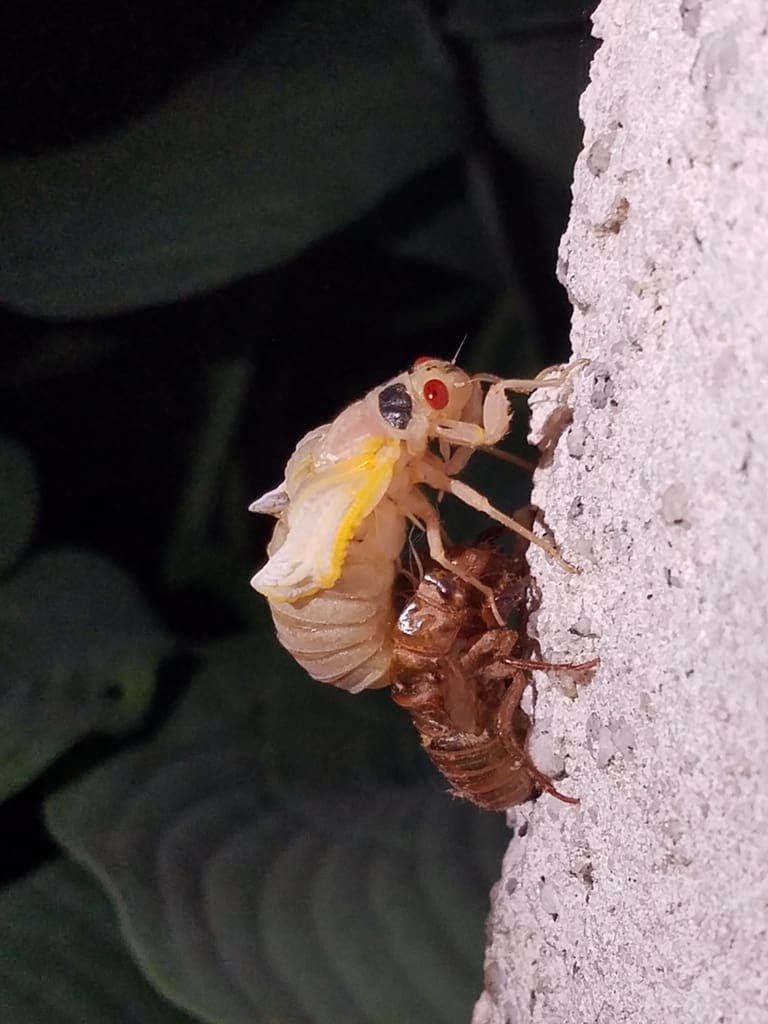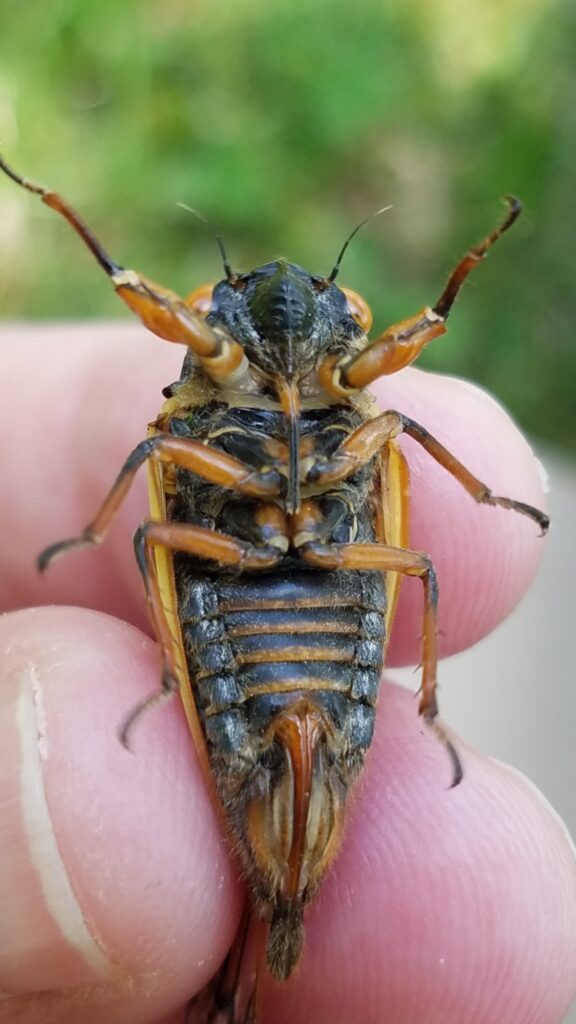If you are an Ohio resident, you are likely aware of this year’s mass emergence of periodical cicadas, Brood X edition. Whether you’ve heard about the 17-year surfacing on television or social media or have had the honor of experiencing the immersive nature of their collective drone firsthand, there’s no denying the astonishing character of this generational phenomenon.
Also known as the Great Eastern Brood, Brood X (pronounced Brood Ten) is one of 15 broods of periodical cicadas that emerge throughout the eastern United States. Brood X is one of the largest groups, gracing 15 states, including central and western Ohio, with their collective presence.

Periodical cicadas spend most of their lifecycle under the ground, feeding on juices from tree roots in an immature state known as a nymph. Depending on the brood, these juveniles clamber upwards every 13 or 17 years, where they emerge synchronously en masse over a two week period, shed their outer shells, and commence what can only be described as a breeding frenzy.
With a population numbering in the billions, periodical cicadas only live a few weeks as an adult, and during this time they all share the same reproductive mission. Once this quest is fulfilled and the females have deposited their eggs in a nearby tree branch, their life cycle is complete.
Whether you love them or loathe them, one must admire the many unique qualities of these remarkable critters. Let’s take a look at 10 traits that will make sure-fire table talk. (Family dinners are about to get a whole lot more interesting.)
- 17-year periodical cicada broods consist of three different cicada species (Magicicada septendecim, Magicicada cassini, and Magicicada septendecula), while 13-year broods include four different species (Magicicada tredecim, Magicicada neotredecim, Magicicada tredecassini, and Magicicada tredecula). They use their distinctive calls to find a mate within their same species.
- Despite the fact that these bug-eyed beauties look remarkably similar to a creature from your favorite science fiction movie, cicadas pose no physical threat to humans and do not bite. (However, since they aren’t exactly graceful flyers, an inadvertent collision with your head is always a possibility.)
- Cicadas emerge from the depths of the ground when the soil reaches 64 degrees Fahrenheit.
- A cicada chorus is made up entirely of fellas! Males make their signature calls (“FAAAIR-oh” in the case of the most common species, M. septendecim and a constant “SHHHHH” by the smaller species M. cassini) using two organs called tymbals. The song resonates in their mostly hollow abdomen and is amplified, similar to the belly of a guitar. In response to this sweet serenade (a mass chorus can reach upwards of 120 decibels in volume), females flick their wings to show their mutual interest.
- The female uses a structure called an ovipositor to slice the end of a small tree branch and lays her eggs within the slit. Recent studies show that not only is the ovipositor reinforced with metals, the structure is serrated like a tiny steak knife.
- On average, females lay between 400 and 600 eggs, making multiple “nests,” each containing ten to twenty eggs.
- Cicada eggs typically hatch towards the end of July, weeks after the demise of their parents. From hungry beetles to ravenous ants, the immature nymphs are extremely vulnerable to predators, so as they fall to the earth, they scurry to the nearest crack in the ground and begin their descent. They slowly make their way down, reaching their final destination 10-12 inches below the earth’s surface by New Year’s Day.
- Like other insects, a cicada wears its skeleton on the outside of its body. The empty shells often found on tree trunks represent their final molting and entrance into adulthood. However, this isn’t the only time within their lifecycle that they shed their exoskeleton. They actually undergo five molting events (also called instar stages) as they slowly grow underground.
- Due mainly to activities such as deforestation, entire broods have been known to disappear completely. For instance, Brood XI was recorded to have emerged in great numbers in 1699 just outside of Boston. Unfortunately, this brood hasn’t been spotted since 1954, their extinction assumed to largely be due to urbanization.
- Want to take part in this generational insect shindig? (In the case of Brood X, your next chance won’t be until 2038!) Download the Cicada Safari Smartphone mapping app and tell researchers where you are seeing periodical cicadas!
Video by G. Edward Johnson, Cicada Final Molt and Darkening timelapse, CC by 4.0




